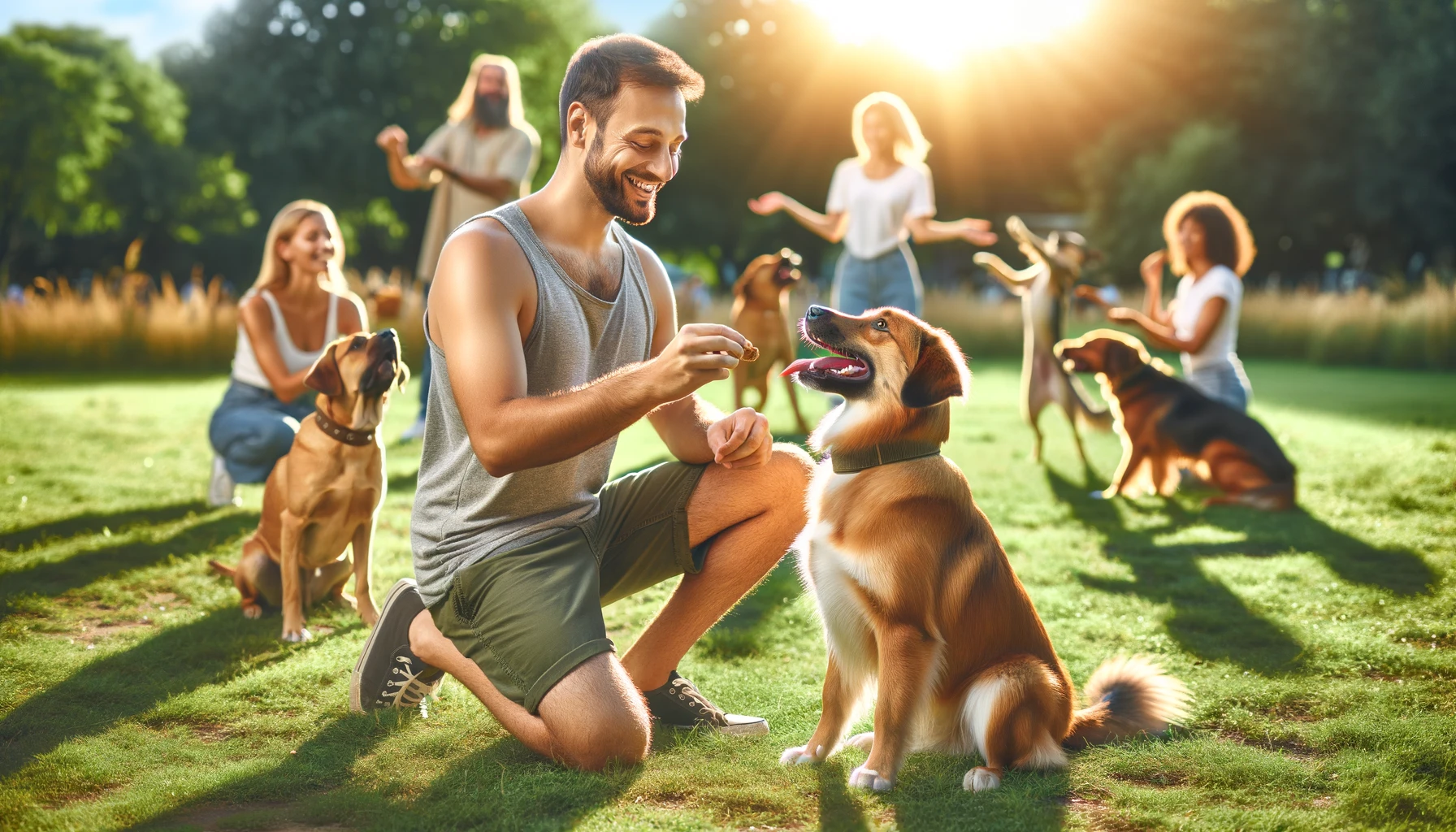Building a strong and lasting bond with your furry companion goes beyond just sharing meals or cuddles; it is about creating moments of connection, understanding, and mutual growth. As a new puppy parent, you have embarked on an incredible journey filled with joy, challenges, and endless opportunities for companionship. One powerful way to deepen this bond is through the art of training – not only does it bring structure and obedience to your pup’s behavior, but it also lays the foundation for trust, communication, and shared experiences that will shape your relationship for years to come.
Imagine the sheer delight in watching your puppy eagerly learn new tricks, their tail wagging in anticipation as they master each command. Teaching puppies tricks from an early age is like planting seeds of intelligence and cooperation within them – nurturing skills that go beyond simple obedience to foster mental stimulation, problem-solving abilities, and emotional well-being. By engaging in playful training sessions with your pup right from the start, you are not only setting them up for success in future learning endeavors but also sowing the seeds for a paw-sitive relationship built on respect, fun interactions, and mutual admiration. Ready to embark on this exciting journey of discovery with your four-legged friend? Let’s unleash a world of Paw-some Pup Play together!
Choosing the Right Tricks
When it comes to selecting tricks to teach your new puppy, one size does not fit all. Consideration of factors such as age, breed, and individual personality plays a crucial role in choosing the right tricks for your furry friend. Puppies differ in their levels of physical abilities and attention spans based on their age. Younger pups may not be ready for complex tricks that require fine motor skills or extended periods of focus, while older puppies can handle more challenging tasks with ease.
Moreover, understanding your puppy’s breed characteristics is essential in tailoring the trick selection process. Some breeds excel at agility-based tricks that involve rapid movements and coordination, whereas others thrive in obedience-focused exercises that enhance listening skills. By aligning the chosen tricks with your pup’s breed tendencies, you provide an avenue for showcasing natural talents and fostering a deeper connection through shared interests. Remember to observe how your puppy responds to different stimuli during training sessions – this will give valuable insights into which tricks spark enthusiasm and engagement versus those that may lead to frustration or indifference.
Basic Commands as Building Blocks
Start with simple commands like sit, stay, come to lay a strong foundation for your puppy’s training journey. These basic commands are not just about obedience; they serve as building blocks for more complex tricks and behaviors in the future. When teaching your pup to sit, you’re instilling manners and control over impulsive behavior. By practicing the stay command, you’re enhancing patience and impulse control while strengthening the bond of trust between you and your furry friend.
Introducing these foundational commands early on also sets the tone for positive reinforcement-based training methods. When your puppy responds correctly to a command such as ‘come,’ praising them enthusiastically or rewarding them with treats reinforces their good behavior effectively. Moreover, consistent practice of these basic commands establishes communication cues that will prove invaluable in shaping desirable behaviors as your puppy grows older. Make training sessions fun by incorporating playtime after each successful execution of a command, creating an engaging experience that strengthens the bond between you and your furry companion even further.
Fun Tricks for Bonding
Engaging in interactive activities with your new puppy is not just about having fun; it’s also a powerful way to deepen your bond and build trust. One classic yet effective game is fetch – a simple game of throwing a toy or ball and having your pup retrieve it. Not only does this activity provide physical exercise for your furry friend, but it also strengthens the connection between you as they learn to bring back the item to you eagerly. This mutual exchange of play creates a positive association with you as their trusted companion, making them more responsive and obedient in other training exercises.
Another delightful game that can enhance your bonding experience is hide-and-seek. This playful activity taps into your puppy’s natural instinct to seek out hidden objects while adding an element of surprise and excitement. Start by hiding behind furniture or around corners, then call out their name in an upbeat tone to see them eagerly search for you throughout the house. As they find you, be sure to reward them with treats or affectionate praise, reinforcing the joyous reunion and strengthening the emotional connection between you both through this engaging interaction.
Advanced Tricks for Mental Stimulation
As your puppy becomes more adept at basic commands, it’s time to level up the mental challenges with advanced tricks. Teaching your furry friend tasks like roll over or high five not only adds a fun element to your training sessions but also provides valuable mental stimulation. These complex behaviors require focus, coordination, and problem-solving skills from your pup, encouraging their cognitive development while deepening the bond between you.
For instance, teaching your puppy to roll over involves breaking down the behavior into smaller steps and rewarding each milestone along the way. Start by luring them into a lying position on their side before gradually encouraging them to complete the full roll motion. This process not only showcases your pooch’s intelligence and ability to learn but also boosts their confidence as they master this impressive trick. Similarly, introducing the high five command can be an interactive way for you and your canine companion to communicate and celebrate small victories together in a playful manner. By incorporating these advanced tricks into your training routine, you’re not just teaching new behaviors – you’re fostering creativity, patience, and mutual understanding in a paw-some partnership with endless possibilities for growth and connection.
Tips for Effective Training
When it comes to training your new puppy, positive reinforcement techniques can work wonders in fostering a strong and lasting bond. Positive reinforcement involves rewarding your pup with treats, praise, or playtime when they exhibit desired behaviors. This approach focuses on encouraging good behavior rather than punishing mistakes, creating a more engaging and enjoyable learning experience for both you and your furry friend.
One of the key aspects of using positive reinforcement is timing—make sure to reward your puppy immediately after they perform the desired action. This instant feedback helps them connect their behavior with the reward, reinforcing the association between the two. Consistency is also crucial; be clear and consistent in your cues and rewards so that your puppy understands what is expected of them. By incorporating positive reinforcement into your training routine, you not only teach valuable skills to your puppy but also build trust and strengthen the emotional connection between you both.
Celebrating Progress
Every wag of the tail, every excited bark, and every successfully executed trick is a moment to celebrate in your puppy training journey. As you guide your little furry friend through the world of learning new tricks, remember that progress is not just about achieving the final goal but also about acknowledging and reveling in each step taken towards it. The joy on your puppy’s face when they finally understand a command or show improvement should be met with cheers, pats, and maybe even a tasty treat as part of the celebration.
It’s easy to get caught up in wanting quick results or feeling discouraged by setbacks, but embracing the small victories along the way can make all the difference. By celebrating progress—no matter how minor—you are reinforcing positive behavior and building a stronger bond with your pup. Each high-five (or paw-five) shared after mastering a trick creates a sense of accomplishment for both you and your four-legged companion, strengthening your relationship through mutual wins big and small.
Remember that training sessions aren’t just about teaching commands; they’re also opportunities for bonding, communication, and growth together. So next time you witness those tiny breakthroughs during practice time, don’t hold back on showing enthusiasm and appreciation for how far you’ve come together. Celebrate those moments with gusto because behind every successful trick lies dedication from both sides—a partnership worth commemorating at every turn.
Conclusion
As we wrap up our paw-some journey into teaching tricks for bonding with your new puppy, let’s recap the key points that will enhance your pup play experience. Remember, consistency is key when training your furry friend; repetition and patience are fundamental elements in building a strong bond through trick-learning sessions. Celebrate small victories and progress, as each successful trick mastered signifies not just obedience but also mutual understanding between you and your puppy.
Furthermore, incorporating positive reinforcement techniques such as treats, praise, or playtime can make the learning process enjoyable for both you and your little companion. By making the training sessions fun and engaging, you’re not only strengthening the bond with your puppy but also creating lasting memories filled with laughter and joy. So keep wagging those tails in excitement as you embark on this journey of companionship through playful tricks and shared experiences!






